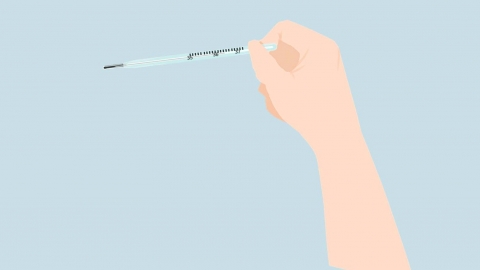What should I do if my child has a fever?
Fever, also known as pyrexia, in children may be caused by high environmental temperatures, post-exertional stress after vigorous activity, common cold, acute tonsillitis, infantile emergency rash, and other conditions. It can usually be managed through physical cooling methods, medication for fever reduction, etc. If any abnormalities occur, timely medical attention is recommended. Detailed explanations are as follows:

1. High environmental temperature: A high ambient temperature or excessive clothing may hinder heat dissipation from the child's body, causing a temporary increase in body temperature. Adjust the environmental temperature promptly, reduce clothing layers, and assist heat dissipation by opening windows for ventilation or using fans.
2. Vigorous activity post-stress: After intense running or play, children may experience transient fever due to an increased metabolic rate and heat production. No special treatment is required; allow the child to rest momentarily, drink an appropriate amount of warm water, and body temperature will return to normal after the body recovers.
3. Common cold: A viral infection can cause the common cold. The virus stimulates the immune system, triggering an inflammatory response that elevates body temperature, often accompanied by symptoms such as nasal congestion and runny nose. Treatment should follow medical advice to use medications like Pediatric Paracetamol and Chlorpheniramine Maleate Granules, Pediatric Chai Gui Fever-Reducing Granules, and Ribavirin Granules to alleviate symptoms.
4. Acute tonsillitis: Bacterial or viral infection of the tonsils causes inflammation, which leads to fever, often accompanied by sore throat and swollen tonsils. Doctors generally recommend the use of antibiotics such as Amoxicillin Granules, Cefaclor Granules, and Pudilan Anti-inflammatory Oral Liquid to control infection and reduce inflammation.
5. Infantile emergency rash: Caused by human herpesvirus 6 infection, the virus replicates within the body, causing high fever. After lasting 3–5 days, the fever subsides and a rash appears, presenting as light red maculopapular eruptions. Doctors may prescribe Paracetamol Suspension Drops, Ibuprofen Suspension, and other antipyretics, along with Oral Rehydration Salts to prevent dehydration.
In daily life, closely monitor the child's temperature changes. During fever, physical cooling methods such as wiping the forehead and armpits with warm water can be used. Maintain good indoor air circulation, provide light and easily digestible meals, and ensure adequate hydration. If the fever lasts more than 3 days, the temperature exceeds 39℃ and is difficult to control, or if symptoms such as lethargy or convulsions accompany the fever, seek immediate medical attention.









